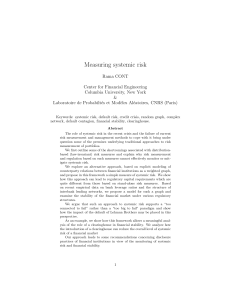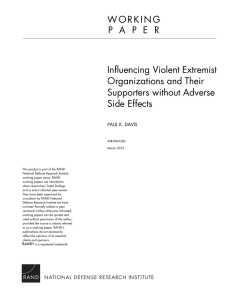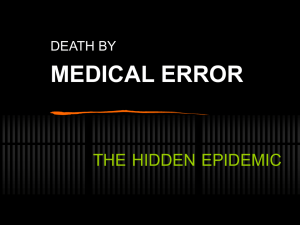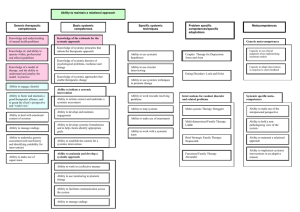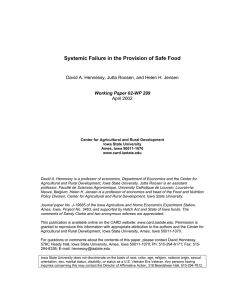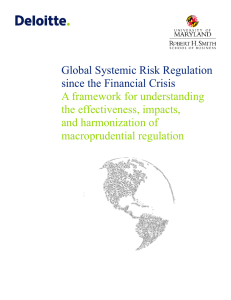Estimation of systemic risk in a model financial system Scientific background
advertisement
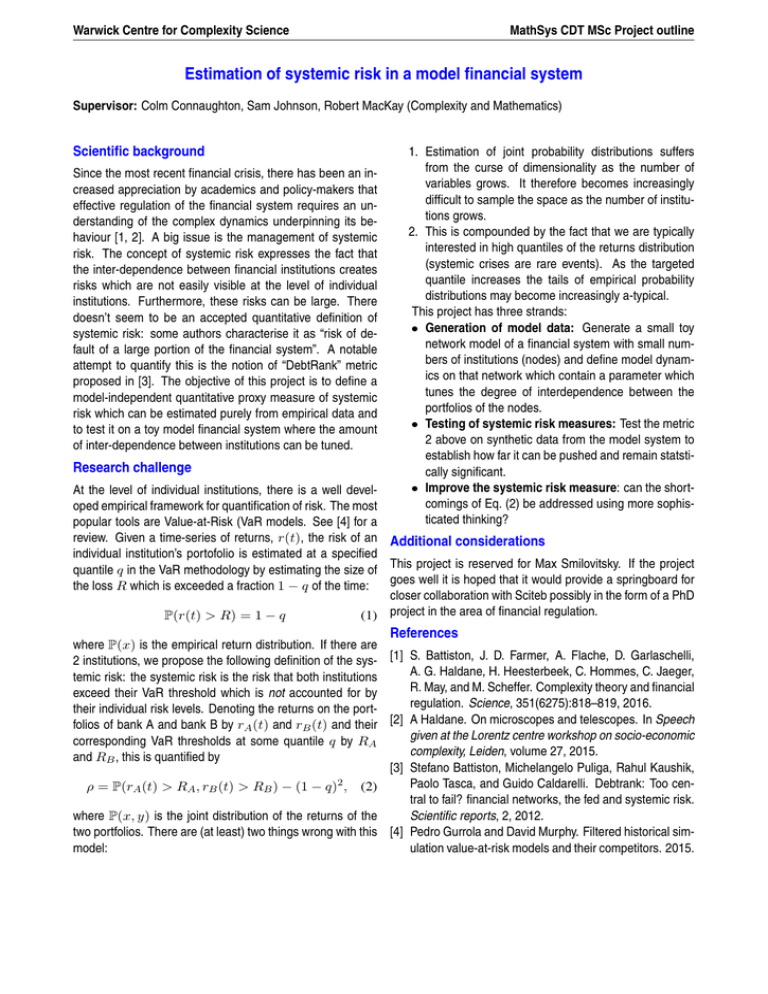
Warwick Centre for Complexity Science MathSys CDT MSc Project outline Estimation of systemic risk in a model financial system Supervisor: Colm Connaughton, Sam Johnson, Robert MacKay (Complexity and Mathematics) Scientific background Since the most recent financial crisis, there has been an increased appreciation by academics and policy-makers that effective regulation of the financial system requires an understanding of the complex dynamics underpinning its behaviour [1, 2]. A big issue is the management of systemic risk. The concept of systemic risk expresses the fact that the inter-dependence between financial institutions creates risks which are not easily visible at the level of individual institutions. Furthermore, these risks can be large. There doesn’t seem to be an accepted quantitative definition of systemic risk: some authors characterise it as “risk of default of a large portion of the financial system”. A notable attempt to quantify this is the notion of “DebtRank” metric proposed in [3]. The objective of this project is to define a model-independent quantitative proxy measure of systemic risk which can be estimated purely from empirical data and to test it on a toy model financial system where the amount of inter-dependence between institutions can be tuned. Research challenge 1. Estimation of joint probability distributions suffers from the curse of dimensionality as the number of variables grows. It therefore becomes increasingly difficult to sample the space as the number of institutions grows. 2. This is compounded by the fact that we are typically interested in high quantiles of the returns distribution (systemic crises are rare events). As the targeted quantile increases the tails of empirical probability distributions may become increasingly a-typical. This project has three strands: • Generation of model data: Generate a small toy network model of a financial system with small numbers of institutions (nodes) and define model dynamics on that network which contain a parameter which tunes the degree of interdependence between the portfolios of the nodes. • Testing of systemic risk measures: Test the metric 2 above on synthetic data from the model system to establish how far it can be pushed and remain statstically significant. • Improve the systemic risk measure: can the shortcomings of Eq. (2) be addressed using more sophisticated thinking? At the level of individual institutions, there is a well developed empirical framework for quantification of risk. The most popular tools are Value-at-Risk (VaR models. See [4] for a review. Given a time-series of returns, r(t), the risk of an Additional considerations individual institution’s portofolio is estimated at a specified quantile q in the VaR methodology by estimating the size of This project is reserved for Max Smilovitsky. If the project goes well it is hoped that it would provide a springboard for the loss R which is exceeded a fraction 1 − q of the time: closer collaboration with Sciteb possibly in the form of a PhD P(r(t) > R) = 1 − q (1) project in the area of financial regulation. References where P(x) is the empirical return distribution. If there are 2 institutions, we propose the following definition of the sys- [1] S. Battiston, J. D. Farmer, A. Flache, D. Garlaschelli, A. G. Haldane, H. Heesterbeek, C. Hommes, C. Jaeger, temic risk: the systemic risk is the risk that both institutions R. May, and M. Scheffer. Complexity theory and financial exceed their VaR threshold which is not accounted for by regulation. Science, 351(6275):818–819, 2016. their individual risk levels. Denoting the returns on the portfolios of bank A and bank B by rA (t) and rB (t) and their [2] A Haldane. On microscopes and telescopes. In Speech given at the Lorentz centre workshop on socio-economic corresponding VaR thresholds at some quantile q by RA complexity, Leiden, volume 27, 2015. and RB , this is quantified by [3] Stefano Battiston, Michelangelo Puliga, Rahul Kaushik, Paolo Tasca, and Guido Caldarelli. Debtrank: Too cenρ = P(rA (t) > RA , rB (t) > RB ) − (1 − q)2 , (2) tral to fail? financial networks, the fed and systemic risk. Scientific reports, 2, 2012. where P(x, y) is the joint distribution of the returns of the two portfolios. There are (at least) two things wrong with this [4] Pedro Gurrola and David Murphy. Filtered historical simulation value-at-risk models and their competitors. 2015. model:


